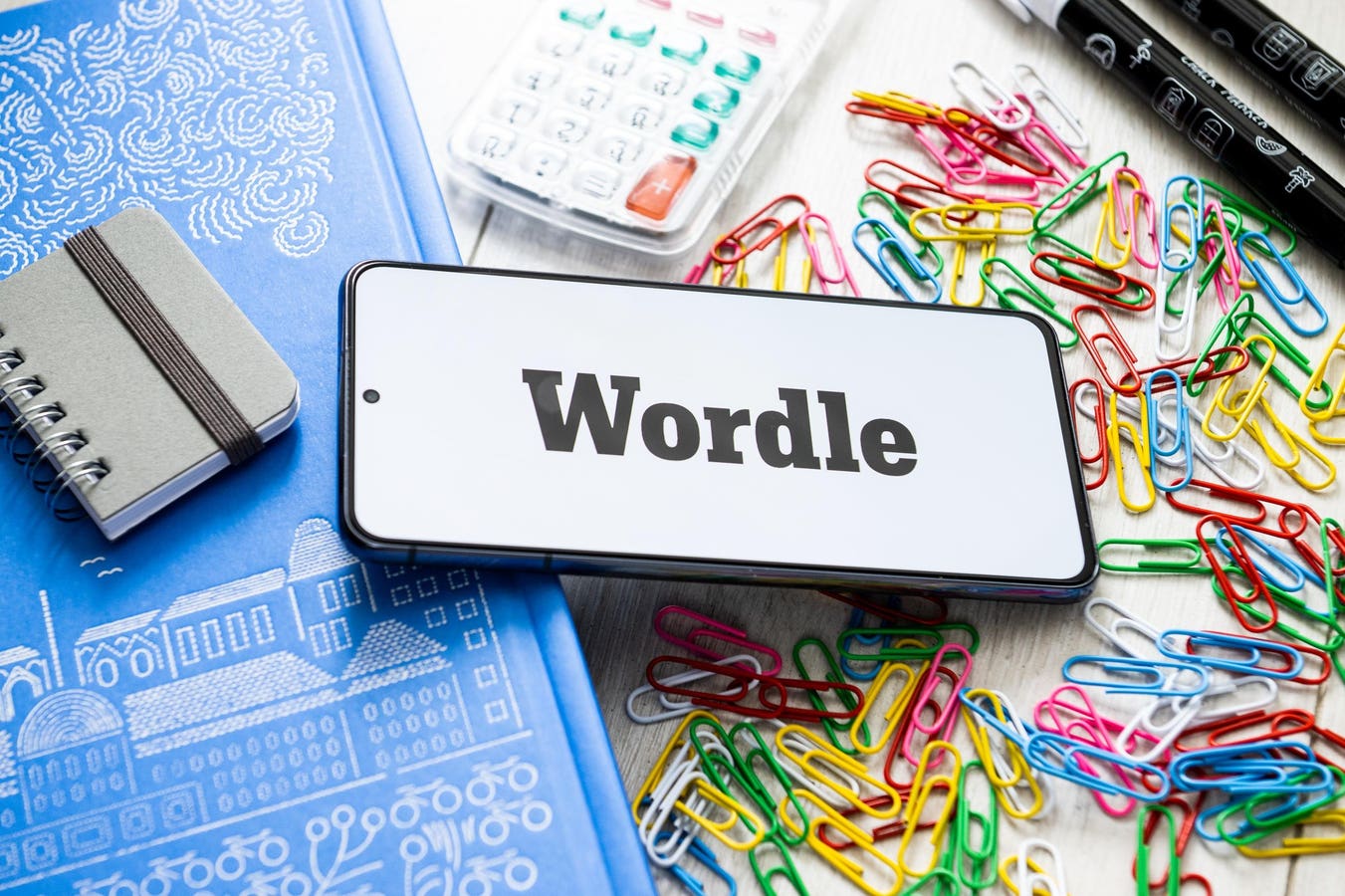Happy young woman in headphones using laptop with double exposure of AI artificial intelligence chat … More
If you’re a content creator, you may already be using AI or experimenting with how to incorporate it into your current processes. AI can help you brainstorm captions, outline a podcast episode, or clean up your video transcripts. But if you’ve ever wondered, “Am I using AI the right way?” or felt behind on the latest AI buzzwords, you’re not alone.
In this next wave of technology, you don’t need a technical background to stay relevant and use AI. Becoming an AI-native creator is about being open about how you can get AI to work for you. An AI-Native creator starts with learning the language of AI to help you navigate AI tools with clarity and confidence.
Here are six essential AI terms explained to help you become an AI native creator and stay ahead of the curve:
Stock image showing a black man’s face looking into a computer screen in an open plan working … More
Prompt Engineering
Definition: Prompt engineering is the skill of crafting clear, specific instructions for AI tools to generate useful, accurate, and high-quality responses. A prompt is simply an input, a question, a task, or a command.
Why it matters: At its core, AI is only as good as the input it receives. A vague or generic prompt often leads to generic results.
With practice, you’ll learn how to create a well-structured, detailed prompt. The more context you provide, the clearer your directions will lead to better results. For creators, prompt engineering can help you turn bland captions into scroll-stopping hooks.
The good news is prompt engineering is not just a technical skill; it’s a creative one. While some people might write out their questions into the AI tools, you also have the option to speak directly into the AI tools like Claude or Chat GPT.
Prompt engineering allows creators to direct AI like a co-writer, production assistant, or researcher. As AI becomes more integrated into content creation workflows, understanding how to communicate with these tools becomes essential.
To improve your writing prompts, consider incorporating details such as tone, voice, or structure that effectively convey the intended content.
When content creators will use prompt engineering:
- Generating tailored Instagram captions and video hooks
- Outlining YouTube or podcast episodes
- Repurposing blog posts into multiple content formats
- Brainstorming content series or product names
- Writing email newsletters, ad copy, or scripts
- Anytime they input or share something with an AI tool like Claude or Chat GPT
Example:
Weak prompt: “Write a caption about Peru.”
Better prompt: “Write a short Instagram caption about visiting Machu Picchu. Mention that it’s one of the Seven Wonders of the World and focus on how it felt to see it in person for the first time. I felt elated finally seeing Machu Picchu for the first time. Keep the tone reflective and under 200 words.”
Hallucination
Definition: In AI, a hallucination occurs when an AI system confidently provides incorrect or fabricated information.
Why it matters: Hallucinations are one of the biggest risks in using generative AI (images, videos, or copy). Whether you’re writing an Instagram caption about a historical site, a podcast script about industry trends, or a blog post referencing a public figure, there’s always a chance the AI could introduce an error.
Example:
You ask ChatGPT: “What year was Pike Place Market established?”
It responds: “Pike Place Market was established in 1852.”
That’s a hallucination. The correct year is 1907.
How to navigate hallucinations as content creators:
While you might use AI tools for speed and support, AI tools should not be your final fact-checker. You are still the editor-in-chief of your brand and content. You should still conduct your due diligence and Verify facts or information from official sources.
Large Language Model (LLM)
Definition: The AI model type that powers tools like ChatGPT, Claude, and Gemini — trained on massive texts like books, websites, articles, and more to understand and generate human-like language.
Why it matters: LLMs power tools like ChatGPT, Claude, and Gemini, when you ask for a blog outline, Instagram caption, or video script, the LLM analyzes your prompt and predicts a coherent, context-aware response.
These models don’t “know” things the way humans do, but they’re skilled at producing relevant, high-quality language based on patterns they’ve learned. The more you guide them with prompts, the better they perform.
Fine-Tuning
Definition: Custom-training an AI model on your data like captions, scripts, or blogs — so it mimics your tone and style. By fine-tuning an AI tool, you’ll hopefully get more content that sounds more like you.
Why it matters for content creators:
If you consistently write in a recognizable voice, tone, or structure for newsletters, social captions, podcast intros, or branded scripts — fine-tuning helps the AI mirror that voice more precisely. It saves time and protects your brand identity as you scale.
For content creators, fine-tuning might involve building a custom Chat GPT and laying out a set of organized examples of the type of content they want the AI tool to mimic. You can copy and paste previous Instagram captions into a spreadsheet and upload them into the AI tools to share your voice and tone for future content.
When should you consider fine-tuning?
- You have a large body of written content (blog posts, newsletters, or captions)
- You want AI to reflect your voice across platforms consistently
- You’re scaling your team or output and need brand-safe automation
Example:
You fine-tune a model on your LinkedIn posts. Now, it consistently generates polished, insightful copy in your voice for the platform.
Synthetic Media:
Definition: Content (text, audio, video, or images) created or partially generated using AI. Instead of being recorded, photographed, or written by a human in real-time, synthetic media is created using algorithms.
Why it matters: Synthetic media is already transforming how creators produce content. If you’ve used an AI-generated voiceover or created a thumbnail with DALL·E, you’ve made synthetic media.
Example:
- Voiceovers: Tools like Descript let you clone your voice and auto-narrate videos.
- Thumbnails and visuals: AI image generators like DALL·E or Midjourney create images in minutes.
AI Native Creator
Definition: A content creator who integrates AI tools into their workflow, voice, business, and monetization strategies.
Why it matters: AI won’t replace creators, but creators who understand AI will grow, scale, and develop their brands and businesses faster. Content creators and influencers who adopt AI early on will learn how to co-create with it as a strategic partner.
Mastering AI isn’t about replacing your creativity or yourself. Content creators and influencers remain the storytellers, community builders, and tastemakers. The more fluently you speak the language of AI, the more opportunities you unlock for your brand and business. Learning and embracing AI tools can help content creators edit, brainstorm, refine, and produce content faster.








